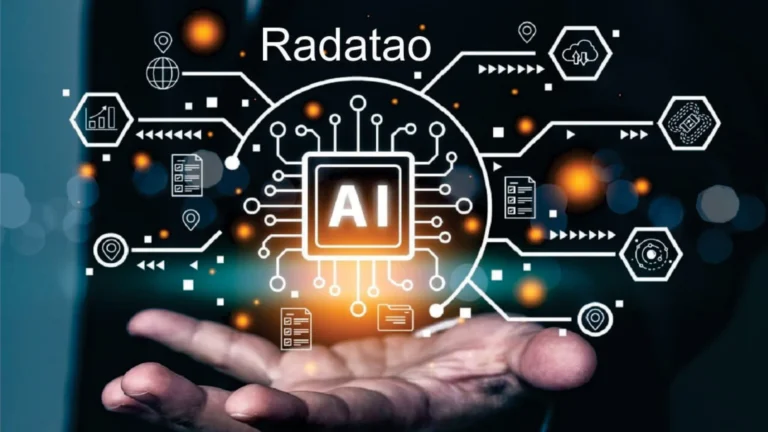In the modern world, data is an invaluable asset that fuels innovation, decision-making, and growth. Businesses, researchers, and governments rely heavily on data to predict trends, improve operations, and drive success. One key tool in this field is RDATAO (Real-Time Data Analysis and Optimization). This technology streamlines how data is managed, analyzed, and used across industries. In this article, we’ll explore the foundations of RDATAO, its benefits, challenges, and practical applications.
1. Introduction to RDATAO
In an era where big data is reshaping industries, the ability to analyze and optimize data in real-time has become a game-changer. RDATAO represents a paradigm shift, providing businesses with the tools to harness vast data sets, make informed decisions, and respond to market shifts rapidly. This article explores the inner workings of RDATAO and its impact on industries ranging from healthcare to finance.
2. What is RDATAO?
RDATAO stands for Real-Time Data Analysis and Optimization. It refers to the technology and processes that enable the rapid analysis, processing, and optimization of data as it is collected. Traditional data analysis methods often involve delays, where data is first stored, then processed. RDATAO, however, allows for real-time insights and adjustments, making it ideal for industries that require immediate decision-making.

3. The Role of RDATAO in Data Optimization
Data optimization is the process of refining raw data to make it more useful and actionable. RDATAO enhances this by performing the optimization in real-time, eliminating delays. With this technology, businesses can filter, clean, and structure data instantaneously, allowing for quicker responses to market trends, operational needs, or customer behaviors.
4. How RDATAO Works
At its core, RDATAO relies on algorithms, cloud computing, and machine learning to analyze and optimize data continuously. The system collects data from various sources, processes it immediately, and offers insights or recommendations. These can range from performance improvements to predicting potential outcomes based on the analyzed data.
For instance, in e-commerce, RDATAO can monitor user behavior, adjust pricing strategies, and optimize inventory in real-time to meet demand.
5. Key Components of RDATAO Systems
- Data Collection Module: Captures data from multiple sources.
- Processing Engine: Analyzes data using algorithms and machine learning.
- Optimization Tool: Applies insights to improve performance or decision-making.
- Real-Time Reporting Interface: Provides immediate feedback to users.
These components work together to streamline data management and ensure organizations make the most of their resources.
6. Benefits of RDATAO in Data-Driven Industries
Enhanced Decision-Making
One of the most significant advantages of RDATAO is its ability to inform decisions instantly. Businesses no longer need to wait for reports to adjust strategies. With real-time data, they can react promptly to new information, maximizing opportunities or addressing issues before they escalate.
Real-Time Insights
RDATAO provides live updates, allowing organizations to stay ahead of the curve. In competitive industries like finance and retail, real-time insights help companies maintain an edge by adapting to consumer behaviors or market changes in the moment.
Improved Efficiency
By streamlining data processing and analysis, RDATAO reduces the time and resources required to derive valuable insights. This leads to better productivity, faster response times, and a reduction in costs.
7. Applications of RDATAO in Business and Technology
Marketing and Consumer Behavior
In marketing, RDATAO allows for real-time tracking of consumer interactions, providing insights into preferences and behaviors. This enables marketers to adjust campaigns on the fly, ensuring higher engagement rates and improved return on investment (ROI).
Healthcare and Medical Research
The healthcare industry benefits from RDATAO by enabling real-time monitoring of patient data, which can lead to faster diagnosis and personalized treatment. Researchers also use RDATAO to analyze large datasets from clinical trials, allowing for more efficient medical discoveries.
Financial Services
RDATAO helps financial institutions process transactions and detect fraudulent activity in real-time. Additionally, banks and investment firms use RDATAO to predict market trends and optimize trading strategies.
8. Challenges Faced by RDATAO Systems
Despite its many advantages, RDATAO faces several challenges. These range from technical issues to concerns around data privacy and security. Without proper management, these challenges can limit the effectiveness of RDATAO systems.
9. Addressing Data Privacy and Security Concerns
One of the biggest concerns with real-time data analysis is maintaining the privacy and security of sensitive information. Since RDATAO processes data continuously, the risk of breaches or unauthorized access increases. Companies must adopt stringent security measures, including encryption and access control, to safeguard data.
10. Overcoming Scalability Issues with RDATAO
As data volumes grow, scaling RDATAO systems can become problematic. However, cloud-based solutions and distributed computing models have been developed to handle these increasing demands. Organizations should focus on scalability to manage larger data sets without losing performance.
11. How to Implement RDATAO in Your Organization
Successfully implementing RDATAO requires a strategic approach. Organizations need to evaluate their current data infrastructure and determine the level of real-time analysis required. Investing in robust processing systems, cloud platforms, and skilled personnel is also crucial.
Key steps for implementation include:
- Auditing current data processes
- Selecting a reliable RDATAO platform
- Training staff in real-time data management
12. Best Practices for Effective RDATAO Utilization
To maximize the benefits of RDATAO, companies should follow these best practices:
- Regularly update systems to keep pace with technological advances.
- Prioritize data security and privacy.
- Use data visualizations for clearer insights.
- Continuously monitor system performance and scalability.
13. Future Trends in RDATAO
AI Integration
Artificial intelligence (AI) is expected to further enhance RDATAO systems. AI can help automate more complex tasks, such as predictive analytics, improving the system’s ability to forecast trends and outcomes with greater accuracy.
Predictive Analytics
Predictive analytics, a core feature of AI-enhanced RDATAO, enables organizations to forecast future events based on real-time data. This is particularly useful in industries like healthcare and finance, where predictive insights can lead to better patient outcomes or profitable investment decisions.
14. RDATAO in Small vs. Large Enterprises
RDATAO isn’t only for large corporations. While the technology was initially designed for high-volume data environments, cloud-based solutions have made it accessible to smaller enterprises. Small businesses can use RDATAO to improve their decision-making and operational efficiency without investing in expensive hardware or infrastructure.
15. Conclusion
RDATAO represents a significant advancement in how data is managed and utilized. By offering real-time insights, businesses can make faster, more informed decisions, improve efficiency, and adapt to changing environments. Whether in healthcare, marketing, or finance, RDATAO has transformed industries by optimizing how data is analyzed and applied.
16. FAQs about RDATAO
1. What does RDATAO stand for?
RDATAO stands for Real-Time Data Analysis and Optimization. It refers to systems and processes that allow organizations to process and optimize data as it’s collected.
2. How does RDATAO improve decision-making?
RDATAO enables real-time insights, allowing businesses to react immediately to new data. This ensures faster, more accurate decision-making.
3. Can small businesses benefit from RDATAO?
Yes, small businesses can benefit from cloud-based RDATAO systems, which offer scalability and cost-effectiveness.
4. What industries use RDATAO?
Industries such as healthcare, finance, marketing, and retail utilize RDATAO for tasks like patient monitoring, fraud detection, and consumer behavior analysis.
5. What are the main challenges of RDATAO?
The main challenges include data privacy, security concerns, and scalability issues. Proper management and technology updates are required to address these.


